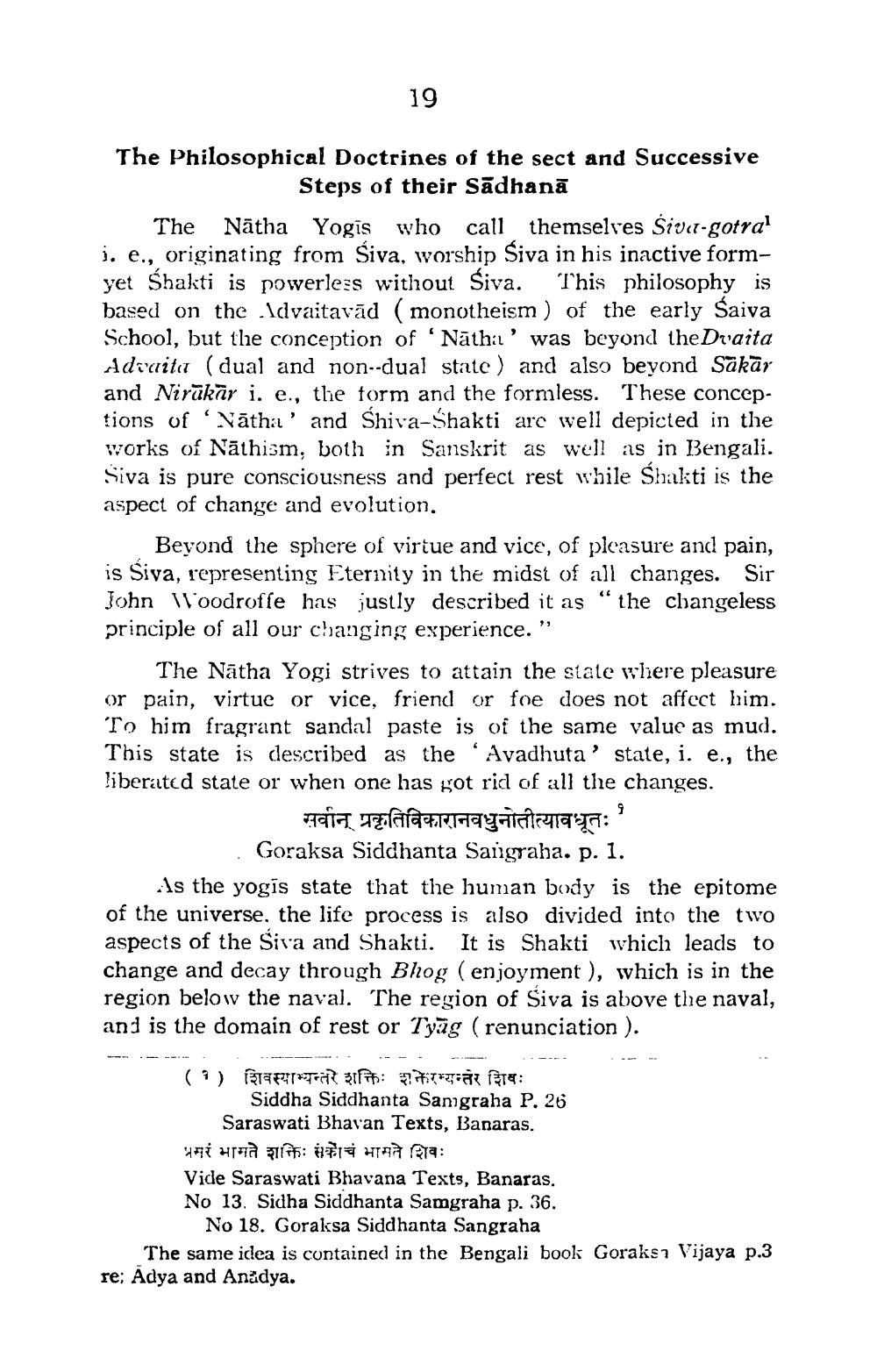________________
19
The Philosophical Doctrines of the sect and Successive
Steps of their sādhanā The Nātha Yogis who call themselves Sive-gotra i. e., originating from Siva, worship Siva in his inactive formyet Shakti is powerless without Siva. This philosophy is based on the ldvaitavād (monotheism ) of the early Saiva School, but the conception of 'Nātha' was beyond the Dvaita Advaita (dual and non--dual state) and also beyond Säkār and Nirākar i. e., the form and the formless. These conceptions of 'Vātha’ and Shiva-Shakti arc well depicted in the works of Nāthism, both in Sanskrit as well as in Bengali. Siva is pure consciousness and perfect rest while Shakti is the aspect of change and evolution.
Beyond the sphere of virtue and vice', of pleasure and pain, is Siva, representing Eternity in the midst of all changes. Sir John Woodroffe has justly described it as “the changeless principle of all our charging experience."
The Nātha Yogi strives to attain the state where pleasure or pain, virtue or vice, friend or foe does not affect him. To him fragrant sandal paste is of the same value as mud. This state is described as the “Avadhuta' state, i. e., the liberated state or when one has got rid of all the changes.
सर्वान् प्रकृतिविकारानवधुनोतीत्यावधूतः' . Goraksa Siddhanta Sangraha. p. 1. Is the yogis state that the human body is the epitome of the universe. the life process is also divided into the two aspects of the Siva and Shakti. It is Shakti which leads to change and decay through Bhog (enjoyment), which is in the region below the naval. The region of Siva is above the naval, and is the domain of rest or Tyäg (renunciation ).
(1) शिवस्याभ्यन्तरे शक्तिः शनरभ्यन्तर शिवः
Siddha Siddhanta Sangraha P. 26 Saraswati Bhavan Texts, Banaras. प्रमरं भामते शक्तिः संकोचं भासते शिवः Vide Saraswati Bhavana Texts, Banaras. No 13. Sidha Siddhanta Samgraha p. 36.
No 18. Goraksa Siddhanta Sangraha The same idea is contained in the Bengali book Goraks7 Vijaya p.3 re; Adya and Anadya.




